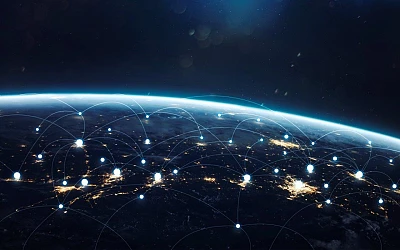The Research Studies being developed under the New Space Portugal initiative aim to assess EO at several levels – policy, legal, market, social and technical –, bringing together partners covering all the above topics. By analysing EO through these different lenses, the Research Studies intend to provide a broader and full-breadth view of EO, thus contributing to the assessment of existing synergies and the development of structured, multi-disciplinary and reproducible strategies, models and solutions that encourage competitiveness.
In his scope, an EO platform was launched. This platform contains a summary of the main issues and conclusions reached under the Research Studies. At the present date, the platform contains a detailed summary of the EO Report, an extensive document that contains a comprehensive body of knowledge and vision of the opportunities and challenges for the EO sector.
With relation to policy and legal topics, the platform addresses these topics at two main levels:
- On the one hand, by assessing the main policy and legislation of 12 market segments with a view to identifying if the policy and legislation expressly refers to satellite EO to achieving its goals or, lacking these, if the policy and legislation establishes obligations or objectives the compliance of which are facilitated through the use of EO. This assessment was done at four levels (international, European Union, African Union and national – Portuguese – levels) and covers the following market segments:
- Climate, Environment and Biodiversity;
- Civil Protection and Disaster Management;
- Energy and Raw Materials;
- Agriculture and Forestry;
- Ocean, Fisheries and Aquaculture;
- Mobility – Maritime and Inland Waterways, Aviation, Road and Rail;
- Health;
- Land Management, Infrastructure and Urban Development;
- Finance and Insurance;
- Tourism and Cultural Heritage;
- Defence and Security;
- Law Enforcement and Justice.
The analysis undertaken showed that the market segments have varied levels of references to EO data in their policy and legal frameworks. At the same time, the policy and regulatory frameworks of certain sectors seem to better accommodate EO/satellite references in light of the goals and obligations set forth therein. For instance, segments such as Climate, Environment and Biodiversity, Civil Protection and Disaster Management, and Agriculture and Forestry, seem to have more pervasive references to EO across their policy and legal documents, whilst segments such as Mobility and Health have only limited references. Other segments such as Energy and Raw Materials, Oceans, Aquaculture and Fisheries, and Tourism and Cultural Heritage mention EO, but mostly with respect to certain specific topics.
Still, it is important to note that, even when the legislation acknowledges the role of EO data, it does not mandate its use. In addition, EU policy and legislation often highlight the use of Copernicus. In this respect, the European Parliament 2021 report on Space Market underlines that special care should be taken in “approving legislation specifically requiring Copernicus and Galileo data to be used as this could risk undermining the technology neutrality principle in EU legislation”. Yet, the Special Report of the European Court of Auditors highlights the existence of gaps in that little legislation mandates the use of Copernicus or Galileo, recommending the “Better use the regulatory framework to support the uptake of EU space services”. The focus of EU legislation on the use of their own EO programme seems to be a different approach from what results, for instance, from the US. Indeed, the US Commercial Remote Sensing Policy of 2003 intends for the US government to increase reliance on US commercial remote sensing capabilities, stating that the US government will “rely to the maximum practical extent on US commercial remote sensing space capabilities for filling imagery and geospatial needs”.
- On the other hand, by assessing a set of EU legal frameworks that apply to stakeholders in the EO lifecycle. This assessment was done for 13 legal frameworks:
- Space activities;
- EO activities;
- Personal data;
- Data access and sharing;
- Cloud and marketplaces;
- Artificial intelligence;
- Intellectual Property;
- Evidence;
- Contracts;
- Critical raw materials, chips and product manufacturing;
- Sustainability and environment;
- Import and export;
- Cybersecurity and resilience.
The policy and legal analysis showed the existence of specific policy and legal frameworks for space activities and increased recognition of the space sector in policy and legislation. However, there is a general absence of dedicated rules or guidelines for the EO sector, whilst the existing (non-dedicated) laws are complex, fragmented and lack substantial coordination, which may lead to challenges in their application. This is further aggravated by the fact that legislation does not, in many cases, take into consideration the specificities of EO.
On the basis of the assessment done at the above two main levels, preliminary conclusions were reached, such as that:
- Improvements in policy and legal frameworks should be evaluated to ensure they encourage the uptake of EO, together with current and announced initiatives such as the European data spaces and the expected Strategy on Space Data Economy;
- One of such improvements could be a careful analysis aimed to ensure that the emphasis on Copernicus does not negatively impact technology neutrality and the use of a diverse range of EO data sources, an important condition for a competitive market;
- EO stakeholders need to carefully assess the applicable legal provisions to ensure their compliance, including in light of the envisaged EU Space Law.
VdA is now undertaking, together with its partners, field research to obtain additional information with a view to identifying operational, technical, market and legal requirements in a set of selected market segments and on the basis of a set of preliminary use cases. The feedback obtained will contribute to the development of models, scenarios, theories, solutions, services and approaches for EO with a view to responding to the needs identified and further promoting EO products and services. If you would like to contribute to our research, please check our questionnaire here.
